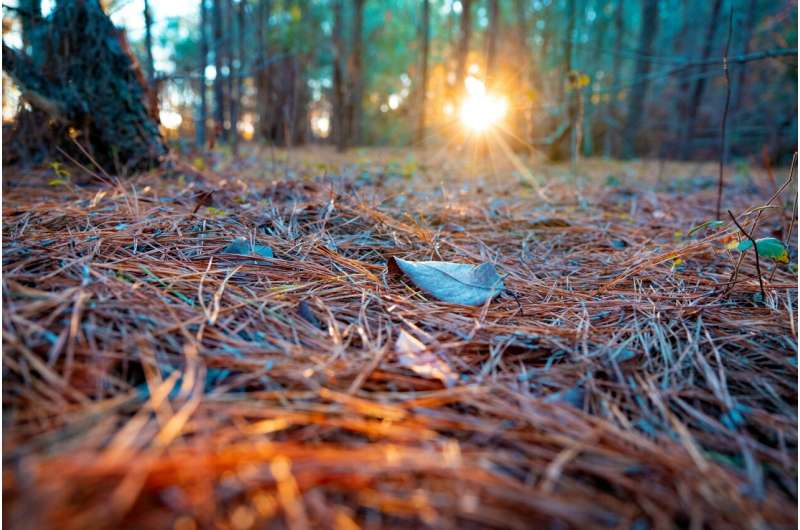This article has been reviewed according to Science X's editorial process and policies. Editors have highlighted the following attributes while ensuring the content's credibility:
fact-checked
peer-reviewed publication
trusted source
proofread
Turning pine needles into energy to reduce wildfire risks

The increasing frequency of environmental fires is a serious issue around the world and one that is being exacerbated by climate change. Millions of hectares and thousands of homes are at risk. Recovery times will run to decades for much of the devastation in Australia, Greece, California, India, and elsewhere.
New approaches to reducing the risk of fires are now needed, ones that do not simply involve political grandstanding and the purchase of glamorous but largely ineffective solutions.
In an article published in the International Journal of Environment and Waste Management, a research team from India points out that one of the main contributors to the ease with which fires can spread is the accumulation of biomass, such as dry pine needles, on the forest floor.
Pankaj Verma of the TR Abhilashi Memorial Institute of Engineering and Technology in Tanda Mandi, and colleagues have explored the potential for reducing the biomass risk. They suggest that it is worth engaging at-risk communities to see this "waste" material as a valuable energy resource for power production.
This would have many other environmental and economic benefits, as well as clearing the forest floor and reducing a highly inflammable fuel source for fires.
Forests play an integral role in the ecological cycle, offering habitat and food for various species and hosting diverse vegetation. The team notes that in Himachal Pradesh, India, forest cover has increased, but the predominant species is the Chir Pine or Longleaf Indian Pine (Pinus roxburghii), which sheds a large volume of dry needles, particularly from January to April. The number of forest fires in the region seems to have risen with the ascent of this tree species.
Despite their availability, dry pine needles are seldom used as fuel due to their low energy density and heating value. The researchers propose that with appropriate technology, it should be feasible to convert this low energy density biomass into high energy density fuel, such as briquettes.
As India's energy demands rise, such a waste-to-energy approach could help address this issue, providing a renewable energy source and simultaneously reducing forest fire risk.
This concept also promotes the sustainable use of forest resources, encourages environmental conservation, and offers social and financial benefits to local communities.
More information: Pankaj Verma et al, Forest fire mitigation by social economic development of local communities using pine needle as potential fuel, International Journal of Environment and Waste Management (2024). DOI: 10.1504/IJEWM.2024.138887
Journal information: International Journal of Environment and Waste Management
Provided by Inderscience





















